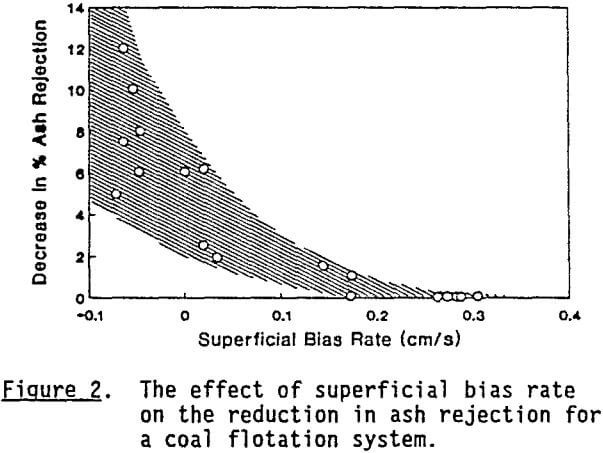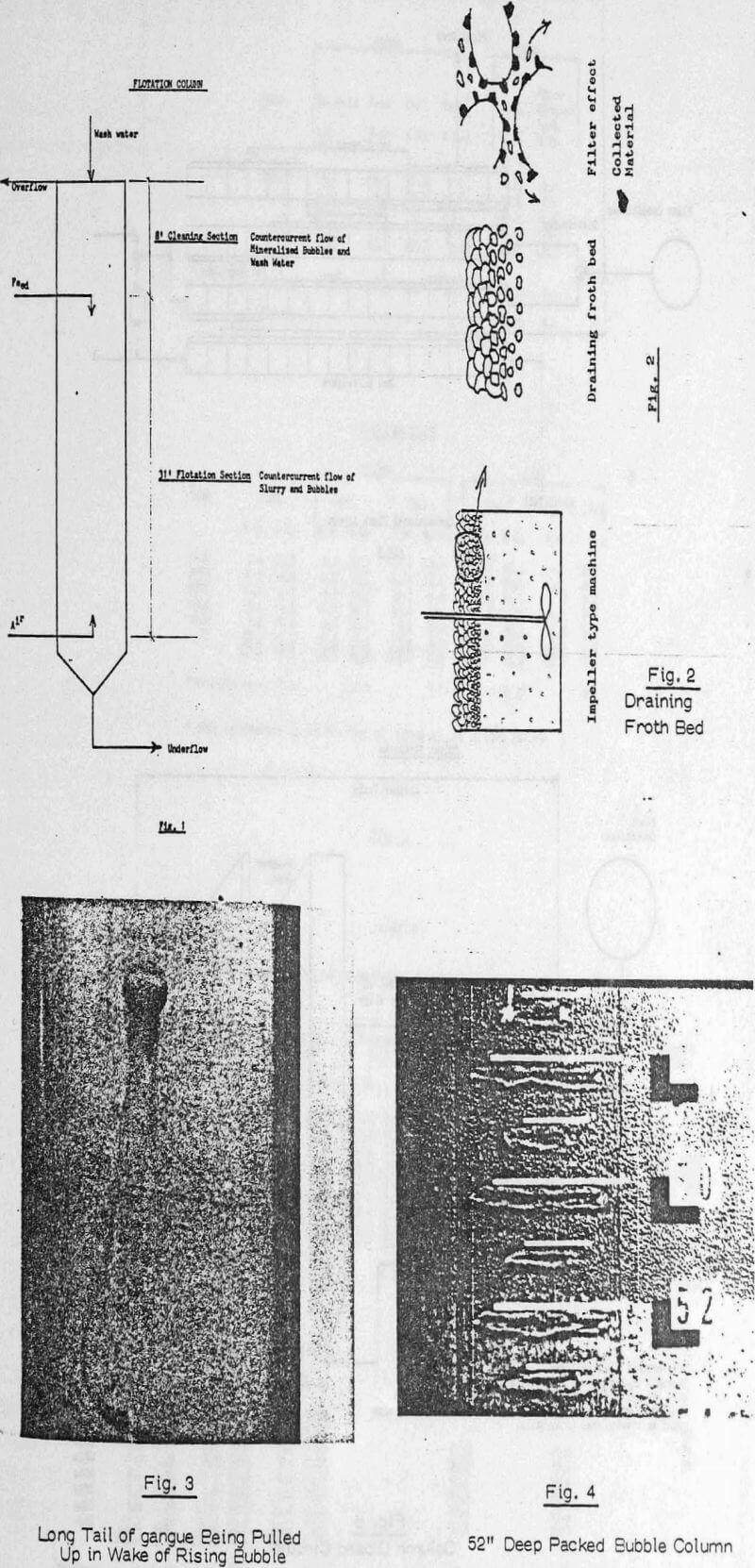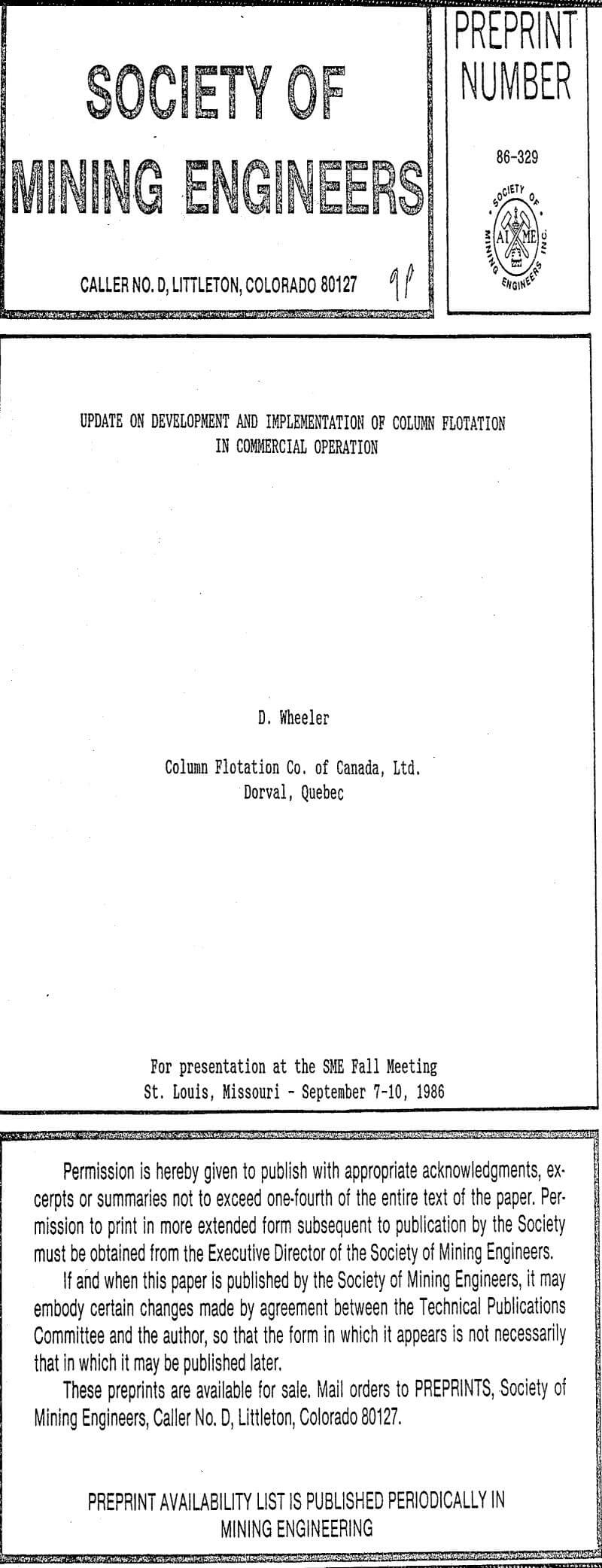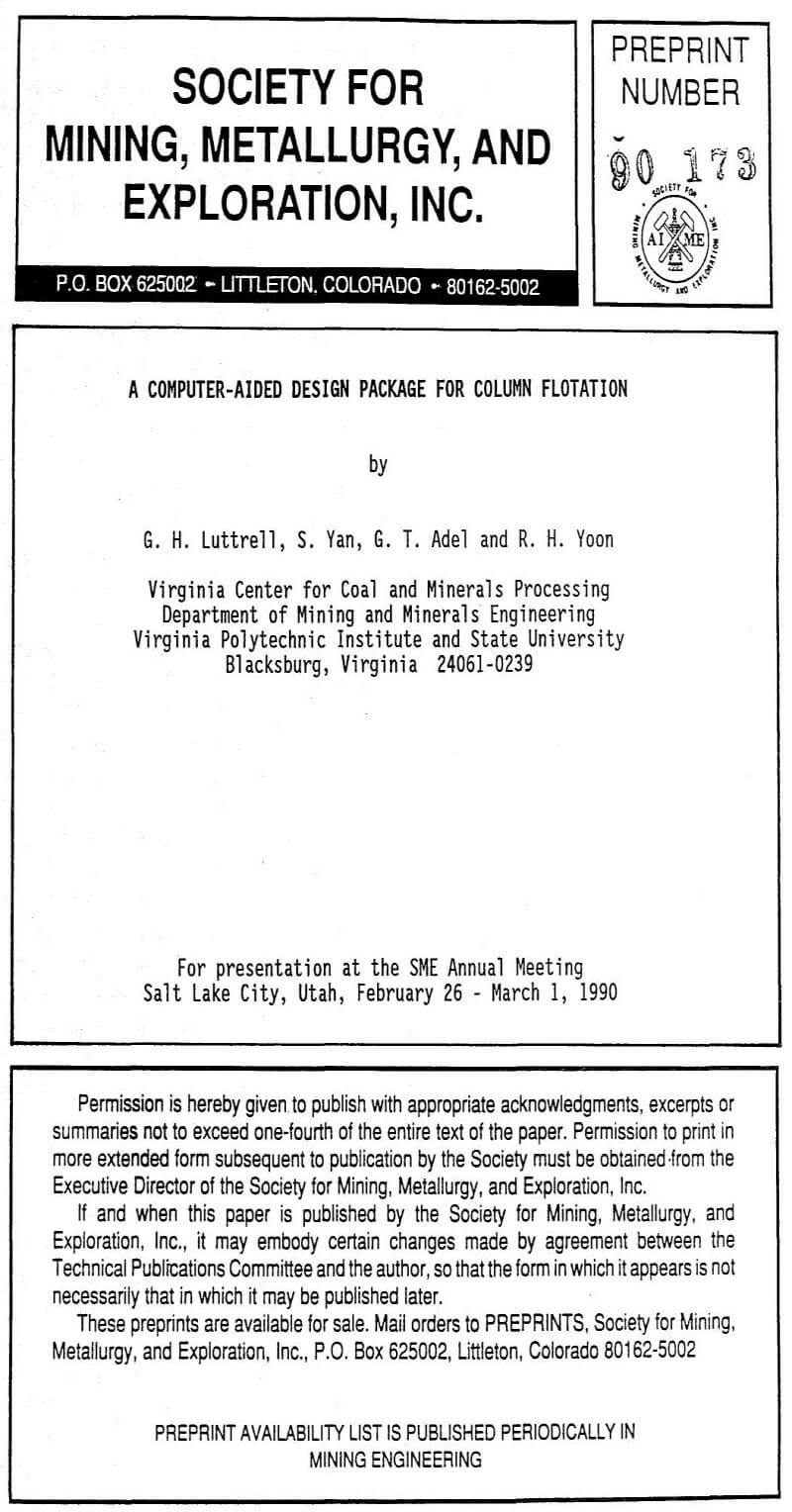Counter Current flow of mineralized bubbles & wash water
The column underflow is always of slightly higher volume than the feed. This volume imbalance, called BIAS in the control system, is made up by wash water inserted at the top of the column. Part of this wash water travels down the column to exit with the underflow. The remainder overflows with the loaded bubbles.
It is this unique application of wash water that completely separates the column method of concentration from anything that has been used before. A conventional, draining froth bed is NOT used in the column.
The regular flotation cell uses a draining froth bed to separate values and gangue (Fig. 2). As the flotation bubble, carrying its mineralized load, arrives at the interface it is surrounded by a relatively large wall of slurry containing gangue. In moving upward into the froth bed, the slurry around the bubble tends to drain back beneath the interface. This draining brings the bubbles closer together and they start acting like a mechanical filter, entraining some of the gangue particles.
Apart from these entrained particles, there is another source of contamination. The water in the froth product of a cell is feed water and must contain gangue slimes because of their low settling velocity.
In the column, as a bubble moves upward picking up the floatable particles it pulls up in its wake a tail of gangue (Fig. 3). There is an upward movement imparted to the finer gangue particles by the velocity of the bubble. The downward flowing portion of the wash water, that which makes up the volume imbalance between underflow and feed, sweeps away that tail of gangue following the bubble. The downward velocity of the wash water exceeds the upward velocity imparted to the gangue by the bubble.
A packed bubble column is used to concentrate. Instead of the bubbles coming closer together as in a draining froth bed, the downward flow of wash water keeps the bubbles apart. (Fig 4) Mechanical entrainment cannot occur and gangue slimes are prevented from reaching the top of the column. The water in the column concentrate is wash water, NOT feed water. Only what is attached to a bubble can reach the top of the column.
It is the countercurrent flow of bubble and wash water that enables the column to produce very high grade concentrates. It also enables cleaning to be carried out at high percent solids.
Counter Current flow of slurry and air bubbles
In a mechanical cell, the impeller used to keep the solids in suspension also generates the air bubbles. Using negative pressure the impeller pulls in air and it is in this active zone that the recovery of floatable particles takes place. A problem arises in that the very turbulence which leads to this attachment is the very condition that can cause the detachment of the same particle.
Once out of the active zone, the relative velocity between particle and air bubble is low as they are swept around the cell. This reduces the probability of collision between them. Any particle missed in the active zone, or detached once picked up, will have to wait for a return to that zone for attachment. This leads to short circuiting in the cell.
There is no agitation in the column. This means the settling solids are meeting a constant stream of upward moving bubbles. They meet head on over the entire length of the flotation section. Every bubble and particle spends its whole time productively in the flotation section.
An interesting point has been raised regarding the vertical configuration of the column where the cleaning section is above the flotation section. If a collected particle detaches from an air bubble above the interface and drops back below the interface, there is 100% of the flotation section available for reattachment. In contrast, with the horizontal arrangement of the standard cells should a collected particle drop out of the draining froth bed of let us say cell 6 of a 10 cell bank, only 40% of the retention time is available for collection once more.
Hydraulic Entrainment
If wash water is properly utilized, only those particles which are attached to bubbles should be collected in the froth product from the column. The effectiveness of the wash water is generally characterized in terms of the “bias” flow rate. The bias rate can be determined experimentally from the difference between the volumetric flow rates of the feed and reject streams.
Experimental studies conducted at Virginia Tech indicate that the entrainment of fine particles is essentially eliminated when a superficial bias rate (Vw) greater than 0.25 cm/s is maintained through the cleaning zone of the column. This phenomenon is illustrated in Figure 2 for a fine coal flotation system. As shown, a marked decrease in product grade occurs as the bias rate is decreased below 0.25 cm/s.

Below this critical value, the scatter in the experimental data begins to increase as the separation becomes increasingly sensitive to changes in the characteristics of the froth phase. Under these conditions, quantitative predictions become very difficult in the absence of equations which describe the behavior of three-phase froths. Therefore, the effects of bias rates lower than 0.25 cm/s have not been considered in the development of the present simulation package.

 |
 |
